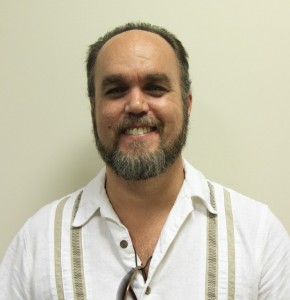 When I started doing time in 1985, I was not a model prisoner. I was young and not particularly respectful of authority.
When I started doing time in 1985, I was not a model prisoner. I was young and not particularly respectful of authority.
I had a buddy, Pat, who worked with me in the kitchen. Pat was not usually interested in doing anything against the rules, but we had other things in common and managed to develop a friendship. Both of us had life sentences and were looking to do a lot of time.
One day at work an older prisoner told Pat that he should not associate with me. He said I was a bad influence, and that I would never change. Older guys were rare at Alto, the notorious north Georgia prison where I spent a lot of my time. At that time, I guess there were fewer than 10 men over the age of 25, and only two or three over 50. Most of the more than 1,500 prisoners were in the 17 – 23 range, and the older men received a certain respect not only because of their age but because of the time they had done.
It hurt my feelings to be judged so harshly, but it also challenged me. His comment spurred me to look at how I was being perceived by others, and to recognize that other’s perceptions were sometimes an accurate reflection of who I really was.
This incident came back to me as I was reading about Jonathan Bun, a 17-year-old Clayton County, Georgia, youth accused of the murder of Deputy Richard Daly. Bun has a long juvenile record, and was often under the supervision of juvenile authorities either in community programs or in detention. In August, Judge Steven Teske wrote an article about his interaction with Bun as a juvenile court judge. He explored the possibility of identifying kids such as Jonathan Bun at an early age and focusing more intervention on the “eight percent,” the portion of kids who were shown in an Orange County, California study to account for a large percentage of repeat offenses and who demonstrated a high likelihood of committing serious crimes.
Judge Teske’s piece outlines the problem and potential strategies for addressing it. He ends by saying, “The sad reality is that not all kids can be saved.”
This is a sobering statement, and undeniably true from a logical perspective. Some people will insist on going down the wrong road no matter how much help they are offered. Bun was heavily supervised, placed in programs of all sorts, and at one point escorted from school to aftercare, and then home.
From my vantage on the inside of prison, I often wondered about the ability of some people to really change. I worked as a teacher’s aide in various schools, was a mentor to younger prisoners, and interacted with prisoners of all sorts for nearly 25 years. I moved from the kid who, according to that old man, was “no good” to a positive and supportive human being. I became the one looking at younger guys and wondering if there was any help for them.
Over and over I made mistakes. Youngsters in whom I had invested time and energy would make bad choices, seemingly out of the blue. Sometimes the opposite happened; a kid I had given up on would suddenly change his ways. I came to believe in a pattern. There were some who would rise above the circumstances no matter how difficult it was. They would thrive even in the worst prison. Others would continue to do wrong no matter what, even when extraordinary help was given to them. In the middle was the largest group, the group that could go either way depending on what was around them.
This middle group became my focus. I would try to enlist the positive guys for my own efforts. I would steer clear of the ones who made trouble, and I would reach out to those I thought I could help. This kind of triage worked for my purposes, with one caveat. I was always ready to reassess my evaluation of someone. I remembered myself, and how many people thought I would never change. I suppose that I continued to have hope and faith in human potential contrary to the evidence.
This approach, with a similar caveat, may work in evaluating juveniles as well. The “eight percent” problem has an “eight percent” solution as well, which Judge Teske outlines in his piece. Applying these strategies can help some of these kids. Even if we can identify the eight percent, how can we identify the subset that will resist all efforts to help them?
I do not think we really can. All we can do is try to identify them, offer them help, and be ready to change what category we put them in.
